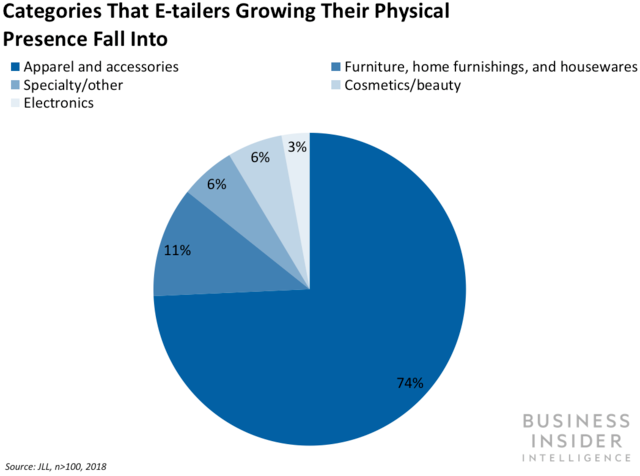Digitally native brands are expanding their brick-and-mortar presences and plan to establish 850 stores across the US over the next five years, according to a report by JLL.
New York City is the most popular place for e-tailers to open both pop-up (41.3%) and permanent (59.5%) locations — likely due to its size and status as a major retail center — with the SoHo neighborhood being the most popular area in the city. Other major urban markets such as Los Angeles and San Francisco are also popular.
Many online brands have already been pushing for a stronger physical presence.Online startups like Warby Parker and Everlane as well as giants like Amazon have added physical locations, seeking greater exposure and a boost in visibility and sales.
Casper is another sterling example: The online mattress seller opened its first permanent store in NYC earlier this year, has 18 temporary locations, and plans to open 200 new stores within three years. The company cites faster sales growth and lower customer acquisition costs in cities with stores as an indication that a physical push is a sound strategy and as motivation for continued brick-and-mortar efforts.
Growing a brick-and-mortar presence seems to be of particular importance to certain types of companies:
- The majority of “clicks-to-bricks” retailers are apparel and accessories companies, enabling customers to try before they buy. E-tailers in these categories make up a resounding 74% of those with plans to make a physical push in the coming years. This is likely because customers would benefit from being able to try apparel and accessories on before making a purchase. This possibility is corroborated by the fact that the category in second place is furniture, home furnishings, and housewares. Being able to see products in that category also benefits shoppers, as they can check to see if the dimensions are what they need or if the furniture they’re interested in is comfortable.
- Half of these e-tailers are luxury brands, which lets customers see expensive purchases before buying. Exactly 50% of the digitally native companies looking to expand their physical presence are sellers of high price-point goods. These companies stand to gain by opening physical stores because consumers are likely to be warier about making expensive purchases without seeing the product first than they would be about buying cheaper items. These retailers may also benefit from creating a premium, high-class atmosphere in their physical locations to further establish the impression that they’re selling luxury goods that are worth the investment.

